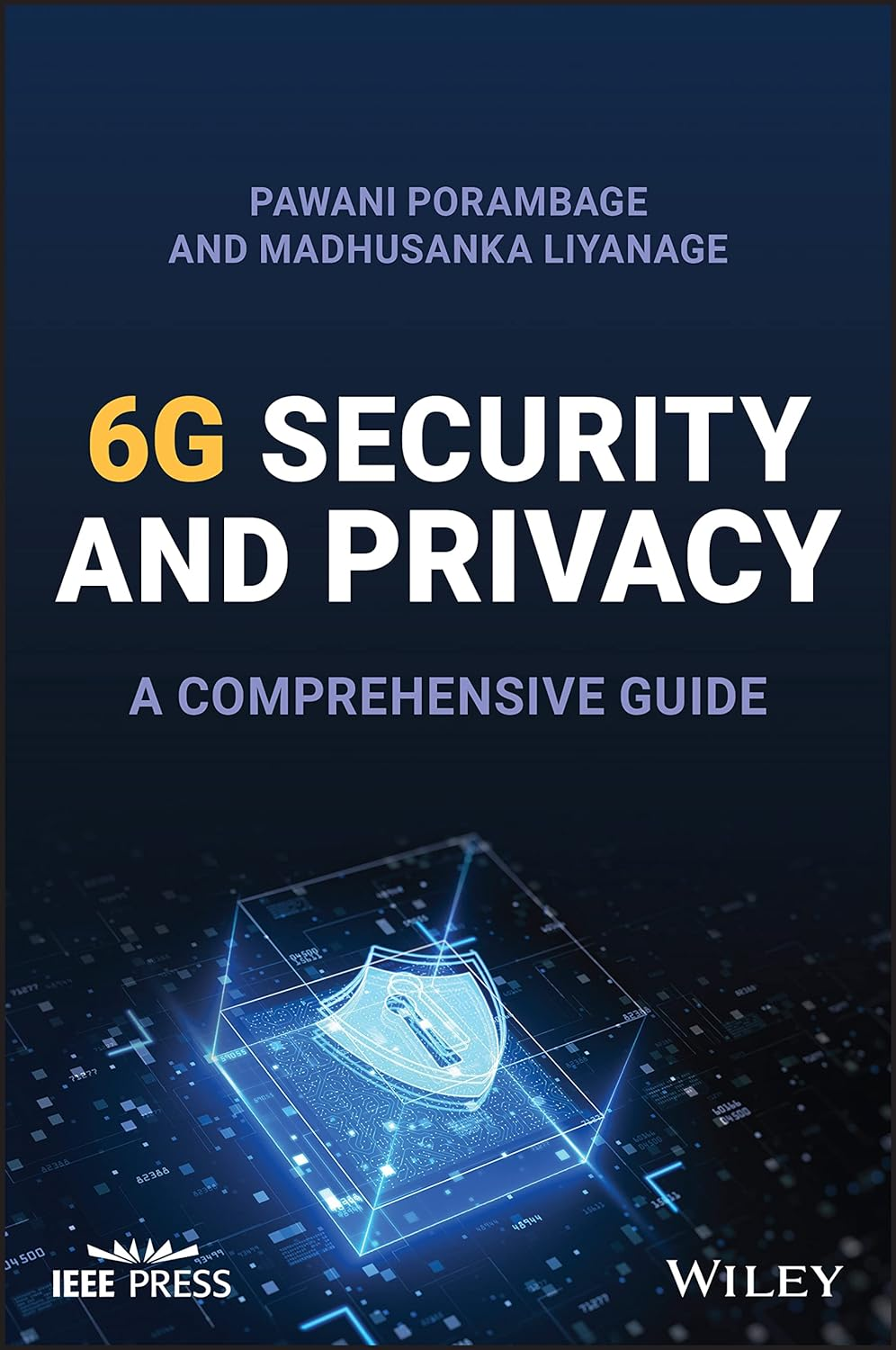-
.NET (.NET Core)
-
1C
-
APL
-
AWK
-
Agda
-
Agile/Scrum
-
Alef
-
Assembler
-
Basic
-
Beta Programming Language
-
Big Data/DataScience
-
C
-
C#
-
C++
-
CSS
-
Cobol
-
Crystal
-
D
-
Dart
-
DataBase (SQL)
-
Delphi
-
F#
-
Flutter
-
Fortran
-
GPT/AI/ИИ
-
GameDev
-
Git
-
Go (Golang)
-
HTML
-
Hacking and Security
-
Haskell
-
Java
-
JavaScript (JS)
-
Julia
-
Kotlin
-
Machine Learning (ML)
-
Natural language processing (NLP)
-
PHP
-
Pascal
-
Python
-
R
-
Ruby
-
Rust
-
Scratch
-
Swift
-
UML
-
UX/UI
-
Visual Basic
-
XML
-
АСУ
-
Проектирование/System Design
-
Сети/Network
-
Схемотехника/электронные схемы
-
.NET (.NET Core)
-
1C
-
APL
-
AWK
-
Agda
-
Agile/Scrum
-
Alef
-
Assembler
-
Basic
-
Beta Programming Language
-
Big Data/DataScience
-
C
-
C#
-
C++
-
CSS
-
Cobol
-
Crystal
-
D
-
Dart
-
DataBase (SQL)
-
Delphi
-
F#
-
Flutter
-
Fortran
-
GPT/AI/ИИ
-
GameDev
-
Git
-
Go (Golang)
-
HTML
-
Hacking and Security
-
Haskell
-
Java
-
JavaScript (JS)
-
Julia
-
Kotlin
-
Machine Learning (ML)
-
Natural language processing (NLP)
-
PHP
-
Pascal
-
Python
-
R
-
Ruby
-
Rust
-
Scratch
-
Swift
-
UML
-
UX/UI
-
Visual Basic
-
XML
-
АСУ
-
Проектирование/System Design
-
Сети/Network
-
Схемотехника/электронные схемы
Меню
Security and Privacy Vision in 6G: A Comprehensive Guide

Автор: Liyanage Madhusanka
Дата выхода: 2023
Издательство: John Wiley & Sons, Inc.
Количество страниц: 387
Размер файла: 3,7 МБ
Тип файла: PDF
Добавил: codelibs
Cover
Title Page
Copyright
Contents
Acronyms
About the Authors
Foreword
Preface
Acknowledgments
Part I Introduction
Chapter 1 Evolution of Mobile Networks
1.1 Introduction
1.2 6G Mobile Communication Networks
1.2.1 6G as Envisioned Today
1.3 Key Driving Trends Toward 6G
1.4 6G Requirements/Vision
1.4.1 6G Development Timeline
References
Chapter 2 Key 6G Technologies
2.1 Radio Network Technologies
2.2 AI/ML/FL
2.3 DLT/Blockchain
2.4 Edge Computing
2.5 Quantum Communication
2.6 Other New Technologies
2.6.1 Visible Light Communications
2.6.2 Large Intelligent Surfaces
2.6.3 Compressive Sensing
2.6.4 Zero‐Touch Network and Service Management
2.6.5 Efficient Energy Transfer and Harvesting
References
Chapter 3 6G Security Vision
3.1 Overview of 6G Security Vision
3.1.1 New 6G Requirements
3.2 6G Security Vision and KPIs
3.2.1 Security Threat Landscape for 6G Architecture
References
Part II Security in 6G Architecture
Chapter 4 6G Device Security
4.1 Overview of 6G Devices
4.2 6G Device Security Challenges
4.2.1 Growth of Data Collection
4.2.2 Cloud Connectivity
4.2.3 Device Capacity
4.2.4 Ultrasaturated Devices
4.3 Addressing Device Security in 6G
References
Chapter 5 Open RAN and RAN‐Core Convergence
5.1 Introduction
5.2 Open RAN Architecture
5.3 Threat Vectors and Security Risks Associated with Open RAN
5.3.1 Threat Taxonomy
5.3.2 Risks Related to the Process
5.3.2.1 Prerequisites
5.3.2.2 General Regulations
5.3.2.3 Privacy
5.3.2.4 People
5.3.3 Risks Related to the Technology
5.3.3.1 Open Source Software
5.3.3.2 Radio/Open Interface
5.3.3.3 Intelligence
5.3.3.4 Virtualization
5.3.4 Global Risks
5.4 Security Benefits of Open RAN
5.4.1 Open RAN specific
5.4.1.1 Full Visibility
5.4.1.2 Selection of Best Modules
5.4.1.3 Diversity
5.4.1.4 Modularity
5.4.1.5 Enforcement of Security Controls
5.4.1.6 Open Interfaces
5.4.1.7 Open Source Software
5.4.1.8 Automation
5.4.1.9 Open Standards
5.4.2 V‐RAN Specific
5.4.2.1 Isolation
5.4.2.2 Increased Scalability for Security Management
5.4.2.3 Control Trust
5.4.2.4 Less Dependency Between hardware [HW] and SW
5.4.2.5 Private Network
5.4.2.6 More Secure Storage of Key Material
5.4.3 5G Networks Related
5.4.3.1 Edge Oriented
5.4.3.2 Simpler Security Model
5.5 Conclusion
References
Chapter 6 Edge Intelligence*
6.1 Overview of Edge Intelligence
6.2 State‐of‐the‐Art Related to 5G
6.2.1 Denial of Service (DOS)
6.2.2 Man‐in‐the‐Middle (MitM) Attack
6.2.3 Privacy Leakage
6.3 State‐of‐the‐Art Related to 6G
6.3.1 Training Dataset Manipulation
6.3.2 Interception of Private Information
6.3.3 Attacks on Learning Agents
6.4 Edge Computing Security in Autonomous Driving
6.5 Future and Challenges
References
Chapter 7 Specialized 6G Networks and Network Slicing
7.1 Overview of 6G Specialized Networks
7.2 Network Slicing in 6G
7.2.1 Trust in Network Slicing
7.2.2 Privacy Aspects in Network Slicing
7.2.3 Solutions for Privacy and Trust in NS
References
Chapter 8 Industry 5.0*
8.1 Introduction
8.2 Motivations Behind the Evolution of Industry 5.0
8.3 Key Features of Industry 5.0
8.3.1 Smart Additive Manufacturing
8.3.2 Predictive Maintenance
8.3.3 Hyper Customization
8.3.4 Cyber‐Physical Cognitive Systems
8.4 Security of Industry 5.0
8.4.1 Security Issues of Industry 5.0
8.5 Privacy of Industry 5.0
References
Part III Security in 6G Use Cases
Chapter 9 Metaverse Security in 6G
9.1 Overview of Metaverse
9.2 What Is Metaverse?
9.2.1 Metaverse Architecture
9.2.2 Key Characteristics of Metaverse
9.2.3 Role of 6G in Metaverse
9.3 Security Threats in Metaverse
9.4 Countermeasures for Metaverse Security Threats
9.5 New Trends in Metaverse Security
Chapter 10 Society 5.0 and Security*
10.1 Industry and Society Evolution
10.1.1 Industry 4.0
10.1.2 Society 5.0
10.2 Technical Enablers and Challenges
10.2.1 Dependable Wireless Connectivity
10.2.1.1 New Spectrum and Extreme Massive MIMO
10.2.1.2 In‐X Subnetworks
10.2.1.3 Semantic Communication
10.2.2 Integrated Communication, Control, Computation, and Sensing
10.2.2.1 CoCoCo
10.2.2.2 JCAS
10.2.3 Intelligence Everywhere
10.2.4 Energy Harvesting and Transfer
10.2.4.1 Energy Harvesting
10.2.4.2 Wireless Power Transfer
10.3 Security in Society 5.0
References
Chapter 11 6G‐Enabled Internet of Vehicles
11.1 Overview of V2X Communication and IoV
11.2 IoV Use Cases
11.3 Connected Autonomous Vehicles (CAV)
11.4 Unmanned Aerial Vehicles in Future IoV
11.5 Security Landscape for IoV
11.5.1 Security Threats
11.5.2 Security Requirements
References
Chapter 12 Smart Grid 2.0 Security*
12.1 Introduction
12.2 Evolution of SG 2.0
12.3 Smart Grid 2.0
12.3.1 Comparison of Smart Grids 1.0 and 2.0
12.4 Role of 6G in SG 2.0
12.5 Security Challenges of SG 2.0
12.5.1 Physical Attacks
12.5.2 Software Attacks
12.5.3 Network Attacks
12.5.4 Attacks to the Controller
12.5.5 Encryption‐Related Attacks
12.5.6 AI‐ and ML‐Related Attacks
12.5.7 Stability and Reliability of Power Supply
12.5.8 Secure and Transparent Energy Trading Among Prosumers and Consumers
12.5.9 Efficient and Reliable Communication Topology for Information and Control Signal Exchange
12.6 Privacy Issues of SG2.0
12.7 Trust Management
12.8 Security and Privacy Standardization on SG 2.0
References
Part IV Privacy in 6G Vision
Chapter 13 6G Privacy*
13.1 Introduction
13.2 Privacy Taxonomy
13.3 Privacy in Actions on Data
13.3.1 Information Collection
13.3.2 Information Processing
13.3.3 Information Dissemination
13.3.4 Invasion
13.4 Privacy Types for 6G
13.4.1 Data
13.4.2 Actions and Personal Behavior
13.4.3 Image and Video
13.4.4 Communication
13.4.5 Location
13.5 6G Privacy Goals
13.5.1 Ensure of Privacy‐Protected Big Data
13.5.2 Privacy Guarantees for Edge Networks
13.5.3 Achieving Balance Between Privacy and Performance of Services
13.5.4 Standardization of Privacy in Technologies, and Applications
13.5.5 Balance the Interests in Privacy Protection in Global Context
13.5.6 Achieving Proper Utilization of Interoperability and Data Portability
13.5.7 Quantifying Privacy and Privacy Violations
13.5.7.1 Achieving Privacy Protected AI‐Driven Automated Network Management Operations
13.5.8 Getting Explanations of AI Actions for Privacy Requirements
References
Chapter 14 6G Privacy Challenges and Possible Solution*
14.1 Introduction
14.2 6G Privacy Challenges and Issues
14.2.1 Advanced 6G Applications with New Privacy Requirements
14.2.2 Privacy Preservation Limitations for B5G/6G Control and Orchestration Layer
14.2.3 Privacy Attacks on AI Models
14.2.4 Privacy Requirements in Cloud Computing and Storage Environments
14.2.5 Privacy Issues in Edge Computing and Edge AI
14.2.6 Cost on Privacy Enhancements
14.2.7 Limited Availability of Explainable AI (XAI) Techniques
14.2.8 Ambiguity in Responsibility of Data Ownership
14.2.9 Data Communication Confidentiality Issues
14.2.10 Private Data Access Limitations
14.2.11 Privacy Differences Based on Location
14.2.12 Lack of Understanding of Privacy Rights and Threats in General Public
14.2.13 Difficulty in Defining Levels and Indicators for Privacy
14.2.13.1 Proper Evaluation of Potential Privacy Leakages from Non‐personal Data
14.3 Privacy Solutions for 6G
14.3.1 Privacy‐Preserving Decentralized AI
14.3.2 Edge AI
14.3.3 Intelligent Management with Privacy
14.3.4 XAI for Privacy
14.3.5 Privacy Measures for Personally Identifiable Information
14.3.6 Blockchain‐Based Solutions
14.3.7 Lightweight and Quantum Resistant Encryption Mechanisms
14.3.8 Homomorphic Encryption
14.3.9 Privacy‐Preserving Data Publishing Techniques
14.3.9.1 Syntactic Anonymization
14.3.9.2 Differential Privacy
14.3.10 Privacy by Design and Privacy by Default
14.3.11 Regulation of Government, Industry, and Consumer
14.3.12 Other Solutions
14.3.12.1 Location Privacy Considerations
14.3.12.2 Personalized Privacy
14.3.12.3 Fog Computing Privacy
References
Chapter 15 Legal Aspects and Security Standardization
15.1 Legal
15.2 Security Standardization
15.2.1 ETSI
15.2.2 ITU‐T
15.2.3 3GPP
15.2.4 NIST
15.2.5 IETF
15.2.6 5G PPP
15.2.7 NGMN
15.2.8 IEEE
References
Part V Security in 6G Technologies
Chapter 16 Distributed Ledger Technologies (DLTs) and Blockchain*
16.1 Introduction
16.2 What Is Blockchain
16.2.1 Types of Blockchain
16.3 What Is Smart Contracts
16.4 Salient Features of Blockchain
16.5 Key Security Challenges Which Blockchain Can Solve
16.5.1 Role of Blockchain
16.6 Key Privacy Challenges Which Blockchain Can Solve
16.6.1 Key Challenges
16.6.2 Role of Blockchain
16.7 Threat Landscape of Blockchain
16.8 Possible Solutions to Secure 6G Blockchains
References
Chapter 17 AI/ML for 6G Security*
17.1 Overview of 6G Intelligence
17.2 AI for 6G Security
17.3 Use of AI to Identify/Mitigate Pre‐6G Security Issues
17.4 AI to Mitigate Security Issues of 6G Architecture
17.5 AI to Mitigate Security Issues of 6G Technologies
17.6 Security Issues in AI
17.7 Using AI to Attack 6G
References
Chapter 18 Role of Explainable AI in 6G Security*
18.1 What Is Explainable AI (XAI)
18.1.1 Terminologies of XAI
18.1.2 Taxonomy of XAI
18.1.3 XAI Methods
18.2 Use of XAI for 6G
18.3 XAI for 6G Security
18.3.1 XAI for 6G Devices and IoT Security
18.3.2 XAI for 6G RAN
18.3.3 XAI for 6G Edge
18.3.4 XAI for 6G Core and Backhaul
18.3.5 XAI for 6G Network Automation
18.4 New Security Issues of XAI
18.4.1 Increased Vulnerability to Adversarial ML Attacks
18.4.2 Difficulty to Design Secure ML Applications
18.4.3 New Attack Vector and Target
References
Chapter 19 Zero Touch Network and Service Management (ZSM) Security
19.1 Introduction
19.1.1 Need of Zero‐Touch Network and Service Management
19.1.2 Importance of ZSM for 5G and Beyond
19.2 ZSM Reference Architecture
19.2.1 Components
19.2.1.1 Management Services
19.2.1.2 Management Functions
19.2.1.3 Management Domains
19.2.1.4 The E2E Service Management Domain
19.2.1.5 Integration Fabric
19.2.1.6 Data Services
19.3 Security Aspects
19.3.1 ML/AI‐Based Attacks
19.3.1.1 White‐Box Attack
19.3.1.2 Black‐Box Attack
19.3.2 Open API Security Threats
19.3.2.1 Parameter Attacks
19.3.3 Intent‐Based Security Threats
19.3.3.1 Data Exposure
19.3.3.2 Tampering
19.3.4 Automated Closed‐Loop Network‐Based Security Threats
19.3.4.1 MITM Attack
19.3.4.2 Deception Attacks
19.3.5 Threats Due to Programmable Network Technologies
19.3.6 Possible Threats on ZSM Framework Architecture
References
Chapter 20 Physical Layer Security*
20.1 Introduction
20.2 Physical Layer Security Background
20.2.1 PLS Fundamentals
20.2.2 PLS Approaches
20.2.2.1 Confidentiality (Edgar)
20.2.2.2 Physical Layer Authentication
20.2.2.3 Secret Key Generation
20.3 The Prospect of PLS in 6G
20.3.1 Application Scenarios of PLS in 6G
20.3.2 6G Technologies and PLS
20.3.2.1 IRS
20.3.2.2 Unmanned Aerial Vehicles
20.3.3 Cell‐Free mMIMO
20.3.4 Visible Light Communication (VLC)
20.3.5 Terahertz Communication
20.3.6 Joint Communications and Sensing
References
Chapter 21 Quantum Security and Postquantum Cryptography*
21.1 Overview of 6G and Quantum Computing
21.2 Quantum Computing
21.3 Quantum Security
21.3.1 Quantum Key Distribution
21.3.2 Information‐Theoretic Security
21.4 Postquantum Cryptography
21.4.1 Background
21.4.2 PQC Methods
21.4.3 PQC Standardization
21.4.4 Challenges with PQC
21.4.5 Future Directions of PQC
21.4.6 6G and PQC
References
Part VI Concluding Remarks
Chapter 22 Concluding Remarks
Index
EULA
6G is the next frontier in the field of mobile communications, the development of standards for which will begin in 2026. As telecommunications networks become faster and more intelligent, security and privacy issues are becoming more relevant. With the growing number of connections, there is an urgent need to protect user data and improve the security of systems from new generation threats.
The book contains a complete overview of these threats and new methods of protection against them. It includes forecasting, detection, mitigation and prevention mechanisms to prevent privacy and security threats at any stage. Fully dedicated to the proposed 6G architectures, this book is an indispensable source of information for mobile communication professionals who want to get acquainted with the technologies of the future








